Knowing the lifespan of a shingle roof is crucial for homeowners who want to plan for
future maintenance and replacements. Understanding how long a shingle roof typically
lasts allows homeowners to budget and prepare for the inevitable investment of a new
roof.
In this article, we will explore the various factors that affect the longevity of shingle roofs.
These factors include the type of roofing material, weather conditions, proper care and
maintenance, and the quality of installation. By understanding these factors, homeowners
can take necessary measures to extend the life of their shingle roof.
Weather conditions play a significant role in the lifespan of shingle roofs. Extreme
temperatures, severe storms, and extended sun exposure can all cause damage to the
roofing material over time. Additionally, proper attic ventilation and regular maintenance,
such as annual roof inspections, are essential to detect and address any issues before
they worsen and result in costly repairs or premature roof replacement.
Different types of shingle roofs have varying life expectancies. Understanding the average
lifespan of various types, such as traditional 3-tab shingles or premium architectural
shingles, can aid in making informed decisions when choosing a roofing material.
In conclusion, being aware of how long a shingle roof typically lasts can help
homeowners plan and prepare for future roofing maintenance and replacement. By
considering factors such as weather conditions, proper care, and the type of roofing
material, homeowners can ensure the longevity of their shingle roof. Stay tuned to learn
more about each of these factors and how they impact the lifespan of shingle roofs.
Disclaimer: This article is for informational purposes only and should not be taken as
professional advice. While we strive to provide accurate and up-to-date information,
please note that the best way to ensure your roof lasts for years to come is to contact a
qualified professional. For guidance in your specific case, get in touch with the experts at
Advance Roofing LLC—we’re always happy to help! Advance Roofing LLC has proudly
provided Spokane, WA with high-quality roofing solutions over the years.
Shingle Roof Lifespan: Overview
Shingle roofs typically have a lifespan ranging from 15 to 30 years, although this can vary
based on several factors. The type of shingles used plays a significant role in determining
their longevity. Traditional 3-tab shingles, which are the most common type, tend to have
a shorter lifespan compared to premium architectural shingles.
Proper care and maintenance also play a crucial role in extending the lifespan of a shingle
roof. Regular inspections, timely repairs, and cleaning can help identify and address any
issues before they escalate into more significant problems. Adequate attic ventilation is
also essential as it helps prevent moisture buildup, which can lead to premature
deterioration of the shingles.
Furthermore, weather conditions can significantly impact the lifespan of a shingle roof.
Severe storms, extreme temperatures, and prolonged sun exposure can all accelerate the
aging process of the roofing material.
Factors Influencing Shingle Roof Longevity
When considering installing or repairing a shingle roof, one of the most critical factors to
take into account is its lifespan. Understanding how long a shingle roof can last is
essential for homeowners and business owners alike. Several elements influence the
longevity of a shingle roof, including the type of roofing material, weather conditions,
proper care, and maintenance.
One of the main determinants of a shingle roof’s lifespan is the type of roofing material
used. Asphalt shingles, commonly used for residential roofs, have an average lifespan of
15 to 30 years. However, premium shingles, such as architectural or dimensional
shingles, can last up to 50 years or more. Other types of roofing materials, like metal
roofs, clay tile roofs, and concrete tiles, can have even longer lifespans.
Weather conditions also play a significant role in how long a shingle roof can last.
Extreme temperatures, severe weather events, and prolonged sun exposure can
accelerate the aging process of roofing materials. For example, in warmer climates with
high heat and intense sun exposure, shingles may deteriorate faster than in cooler
regions. Severe storms, including strong winds, heavy rain, and hail, can cause damage to
shingles, leading to leaks and other issues.
Proper care and maintenance are crucial for extending the lifespan of a shingle roof.
Regular inspections, timely repairs, and cleaning can help identify and address any issues
before they escalate into more significant problems. Adequate attic ventilation is also
essential as it helps prevent moisture buildup, which can lead to premature deterioration
of the shingles. Additionally, ensuring that gutters are clean and free from debris can
prevent water damage and potential roof leaks.
However, it is important to note that improper installation can significantly impact the
lifespan of a shingle roof. Hiring a reputable roofing contractor with experience in
installing shingle roofs is essential to avoid installation errors. From using the correct
techniques to ensuring proper sealing and flashing, a professional roofing company will
play a significant role in maximizing the lifespan of the roof.
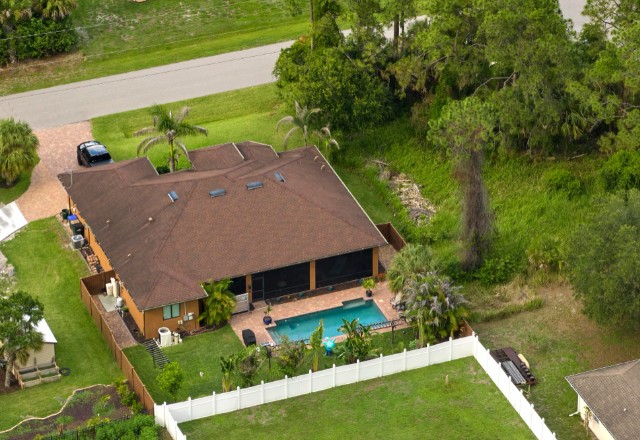
Shingle Material
When it comes to shingle roofing, there are several different materials available. The most
common and widely used material is asphalt shingles. These shingles are affordable,
versatile, and come in a variety of colors and styles. On average, asphalt shingles have a
lifespan of 15 to 30 years.
Architectural shingles, also known as dimensional shingles, are a premium type of
asphalt shingle. These shingles are designed to replicate the appearance of other roofing
materials, such as wood or slate. With their added durability, architectural shingles can
last up to 50 years or more.
In addition to asphalt shingles, other materials used for shingle roofing include metal
roofs, clay tile roofs, and concrete tiles. Metal roofs are known for their longevity, often
lasting 40 to 70 years or more. Clay tile roofs and concrete tiles can also have long
lifespans, ranging from 50 to 100 years.
Quality of Shingles
The quality of shingles plays a crucial role in determining their durability and lifespan.
Higher quality shingles are typically made with better materials and are manufactured using advanced techniques. This results in a more resilient product that can withstand
various weather conditions and last longer.
- One important factor to consider is the type of roofing materials used in
the shingles. Premium shingles are often made with top-grade asphalt,
which provides better protection against UV rays and extreme
temperatures. These shingles are less likely to warp, crack, or deteriorate
over time. - Another factor is the design of the shingles. Architectural shingles, also
known as dimensional shingles, have a layered construction that
enhances their durability. The overlapping layers provide extra protection
against wind, rain, and other elements, making them more resistant to
damage.
In summary, investing in high-quality shingles, choosing premium materials, can
significantly impact the durability and longevity of a shingle roof.
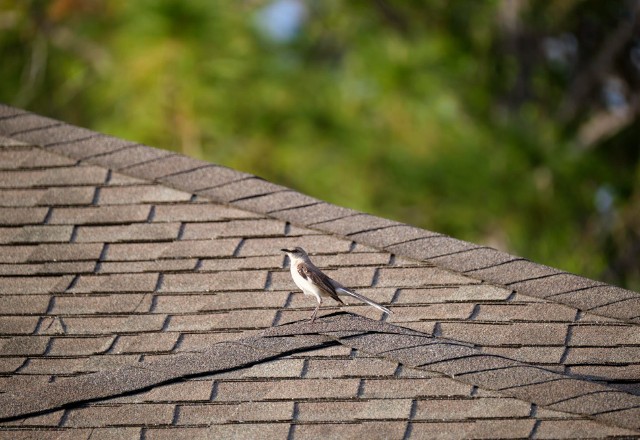
Installation Quality
Proper installation, performed by skilled professionals, is of utmost importance when it
comes to the longevity of a shingle roof. This cannot be emphasized enough. Incorrect
installation can significantly reduce the lifespan of shingles and lead to premature
wearing, leaking, and costly repairs.
Skilled professionals have the knowledge and expertise to install shingles correctly,
ensuring that they are securely attached and properly aligned. They understand the
importance of proper flashing installation to prevent water infiltration and protect
vulnerable areas of the roof. They are also able to identify and address any potential
issues or areas of concern during the installation process.
By hiring a reputable roofing contractor, homeowners can have peace of mind knowing
that their shingles have been installed with the utmost care and precision. Skilled
professionals follow industry best practices and adhere to manufacturer guidelines,
guaranteeing the highest level of installation quality.
Climate and Weather
Climate and weather conditions play a crucial role in determining the lifespan of a shingle
roof.
- Extreme temperatures, whether it be extreme heat or cold, can cause
shingles to deteriorate more quickly. In hotter regions, the sun’s
ultraviolet (UV) rays can take a toll on the shingles, causing them to
crack and fade over time. On the other hand, in colder areas, freeze-thaw
cycles can cause the shingles to expand and contract, leading to
damage. Moisture is another factor that affects shingle lifespan. Excessive
moisture, such as heavy rains or high humidity, can lead to the growth of algae, moss, or mold on the shingles. This not only affects the
aesthetics of the roof but can also cause the shingles to deteriorate
more rapidly. Moreover, moisture can seep underneath the shingles,
leading to rotting and water damage.
Homeowners should select shingle materials that are suitable for their climate and take
appropriate measures to protect and maintain their roofs to maximize their longevity.
Roof Pitch and Ventilation
Roof pitch and proper ventilation are two important factors that contribute to the
longevity of a shingle roof.
The roof’s pitch refers to its slope or incline. A steeper roof pitch allows for better water
runoff, reducing the chances of water pooling on the shingles. When water accumulates
on the roof, it can seep underneath the shingles and cause damage. Additionally, a higher
roof pitch promotes better air circulation, which helps to prevent moisture buildup that
can lead to mold, rot, and deterioration of the shingles.
Proper ventilation is necessary to maintain the durability of a shingle roof. Sufficient
ventilation enables the circulation of air between the attic and the outdoors. This helps to
regulate temperature and moisture levels in the attic space. Without proper ventilation,
heat and moisture can become trapped, creating an environment that accelerates the
aging of shingles. Proper ventilation helps to reduce the risk of shingle damage caused
by excessive heat, moisture buildup, and ice damming.

Maintenance and Care
Regular maintenance and proper care are essential for ensuring the longevity of a shingle
roof.
- One of the most significant factors in maintaining a shingle roof is
regular inspections. It is recommended to have a professional roofing
contractor conduct an annual roof inspection to identify any signs of
damage or wear. - Timely repairs are crucial when issues are detected during inspections
or otherwise. Even minor damage, such as loose or missing shingles,
should be addressed promptly to prevent further deterioration and
potential leaks. Ignoring small issues can lead to more significant
problems down the line. - Another important aspect of maintenance is regular cleaning of the roof.
Removing debris, such as leaves and branches, helps prevent the
buildup of moisture and rot. It is also important to keep gutters and
downspouts clear of debris to ensure proper drainage and prevent water
damage. In addition to regular inspections and cleaning, proper maintenance
involves addressing any issues related to attic ventilation. Improper ventilation can lead to excessive heat and moisture buildup, accelerating
shingle aging. Ensuring proper airflow and insulation in the attic space
can help regulate temperatures and prevent damage to the roof.
By prioritizing regular maintenance, thorough inspections, and prompt repairs,
homeowners can significantly extend the lifespan of their shingle roof.
Average Lifespan of Different Shingle Types
Shingle roofs are a popular choice for homeowners across the country due to their
durability, affordability, and aesthetic appeal. However, like any roofing material, shingles
will eventually reach the end of their lifespan and require replacement. The average
lifespan of shingle roofs can vary depending on the type of shingles used. Let’s take a
closer look at the average lifespan of different shingle types.
Asphalt Shingles
Asphalt shingles, the most common type of shingle used in residential roofing, have an
estimated lifespan range of 15 to 30 years. This lifespan can vary depending on several
factors, including weather conditions, maintenance, and installation quality.
Architectural Shingles
Architectural shingles, also known as dimensional or laminate shingles, have become
increasingly popular in the roofing industry. These shingles are composed of multiple
layers of asphalt, giving them a more textured and three-dimensional appearance
compared to traditional 3-tab shingles.
One of the main advantages of architectural shingles is their enhanced durability and
lifespan. These shingles are typically made from a higher quality asphalt and are
reinforced with fiberglass or other materials, making them more resistant to damage
from severe weather conditions. This means that they can withstand heavy rain, strong
winds, and even hail to a greater extent than standard shingles.
In terms of aesthetics, architectural shingles offer homeowners a wide range of options.
They come in various styles and colors, allowing homeowners to choose a shingle design
that complements their home’s architecture and personal taste. Whether you prefer the
look of wood shake, slate, or even a custom design, there is likely an architectural shingle
that will meet your needs.
Another advantage of architectural shingles is their longer lifespan compared to
traditional shingles. While 3-tab shingles typically last around 15 to 20 years, architectural
shingles can last up to 30 years or more with proper care and maintenance. This
extended lifespan not only provides homeowners with peace of mind but also translates
into long-term cost savings since they won’t need to replace their roof as frequently.
Impact-Resistant Shingles
Impact-resistant shingles are an excellent choice for homeowners seeking enhanced
durability for their roofs. These shingles are specifically designed to withstand the
damaging effects of severe weather conditions, such as hail and strong winds.
Unlike standard shingles, impact-resistant shingles are made with reinforced materials,
such as fiberglass or polymers, which make them more resistant to impact. They are also
manufactured with a special coating that helps absorb the force of impact and prevent
damage to the shingles.
The enhanced durability of impact-resistant shingles can provide homeowners with
peace of mind, knowing that their roofs are better equipped to withstand severe storms
and potential damage. This durability can save homeowners from costly repairs or
premature roof replacements.
In addition to their durability, impact-resistant shingles also offer a range of styles and
colors, allowing homeowners to maintain the aesthetic appeal of their homes while
enjoying the added protection. When choosing impact-resistant shingles, it is important
to consult with a reputable roofing contractor who can guide homeowners towards the
best options for their specific needs.
Signs of a Shingle Roof Reaching the End of Its Lifespan
Asphalt shingle roofs are a popular choice among homeowners due to their affordability
and durability. However, like all roofing materials, shingle roofs have a limited lifespan. It
is essential for homeowners to be able to recognize the signs that their shingle roof is
reaching the end of its lifespan, as this will help them avoid potential damage and costly
repairs.
- One indicator that a shingle roof may need replacement is its age.
Typically, asphalt shingle roofs last between 20 to 30 years. If your roof
is nearing or surpassing this timeframe, it may be worth considering a
replacement. Additionally, factors such as weather conditions, lack of
proper maintenance, and poor ventilation can shorten the lifespan of a
shingle roof. - Another sign that your shingle roof is deteriorating is the appearance of
curled or cracked shingles. Over time, the sun’s UV rays, extreme
temperatures, and moisture can cause the shingles to lose their
flexibility and become brittle. This can lead to the shingles curling at the
edges or developing cracks. Curled or cracked shingles not only
compromise the overall integrity of the roof but also increase the risk of
leaks and water damage. - The presence of excessive granules in your gutters or on the ground
near your home could be a sign of shingle deterioration. Asphalt
shingles are equipped with a protective layer of granules on their
surface, which aids in shielding them from the sun’s rays. As the
shingles age, these granules can start to loosen and shed, leaving the
shingles exposed and vulnerable to damage. Another red flag is the presence of algae or moss growth on the
shingles. While this may seem like a purely aesthetic issue, it can
actually indicate a deeper problem. Algae and moss thrive in moist environments, and their presence could be a sign of moisture infiltration
or poor ventilation in the attic. Left untreated, this can lead to further
deterioration of the shingles and potential structural damage.
If you notice any of these signs on your shingle roof, it is crucial to take action promptly.
Ignoring these warning signs can lead to more severe problems, such as roof leaks and
water damage to your home’s interior. Contacting a reputable roofing contractor for a
thorough inspection and assessment is the best course of action. They will be able to
identify the extent of the damage and recommend the most appropriate solution, whether
it be repairs or a complete roof replacement.
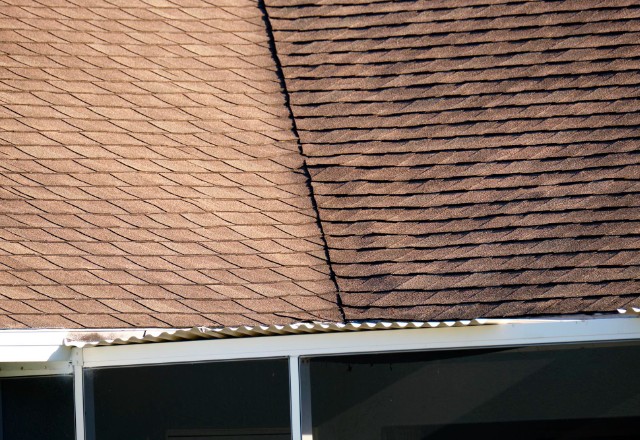
Prolonging Shingle Roof Lifespan
A shingle roof is a significant investment for any homeowner, and it’s only natural to want
it to last as long as possible. Fortunately, there are several steps you can take to prolong
the lifespan of your shingle roof and maximize its durability. Here are some essential tips
to help you get the most out of your shingle roof.
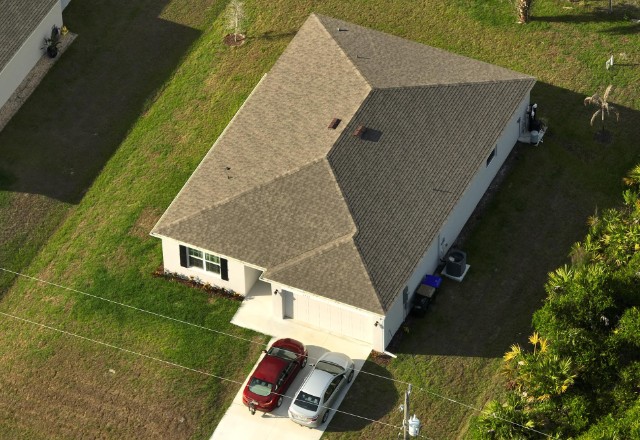
Regular Inspections
Regular inspections are essential for maintaining the longevity of your shingle roof. By
conducting routine inspections, you can catch any potential issues early on and prevent
them from escalating into more significant problems. During these inspections, a
professional roofing contractor can identify damaged or missing shingles, signs of
granule loss, or any signs of deterioration.
By addressing these issues promptly, you can prevent them from causing significant
damage to your roof and extend its lifespan. Regular inspections also allow for early
detection of leaks, which can lead to water damage if left untreated.
It is recommended to schedule annual roof inspections, especially after severe weather
events or major storms. These inspections can identify any storm-related damage and
ensure that your roof is still in good condition.
Prompt Repairs
Timely repairs are crucial when it comes to maintaining the longevity and durability of
your roof. Even small issues, if left unaddressed, can quickly escalate into larger and
more costly problems. By addressing these issues promptly, you can prevent them from
causing significant damage to your roof and extend its lifespan.
Regular inspections play a crucial role in identifying any potential problems with your
roof. During these inspections, roofing professionals can spot issues such as loose or
missing shingles, damaged flashing, or deteriorating roof components. By addressing
these issues early on, you can avoid more extensive damage that could result from leaks
or compromised structural integrity.
One of the most common issues that prompt repairs can prevent is water damage. Leaks
can occur due to damaged or improperly installed roofing materials. If left untreated, even
a small leak can lead to water seeping into your home, causing costly and extensive
damage to your interior, including ceilings, walls, and electrical systems. Additionally, water damage can promote the growth of molds and mildew, posing health risks to you
and your family.
Prompt repairs are especially important after severe weather events or major storms.
These inspections can identify any storm-related damage and ensure that your roof is still
in good condition. Neglecting to address storm damage can result in more extensive
issues, including structural damage and potential hazards.
Gutter Maintenance
Gutters play a crucial role in preserving the lifespan of your shingle roof. Clean and
functioning gutters are essential for redirecting water away from the roof and preventing
water damage.
Clogged or malfunctioning gutters can lead to water overflow, causing water to pool on
the roof surface. This excess water can seep under the shingles, leading to rot, mold
growth, and even structural damage. It can also contribute to the deterioration of the
underlayment, compromising the overall stability of the roof.
Regular gutter maintenance is necessary to ensure that water flows freely and effectively
away from the roof. This includes regular cleaning to remove leaves, twigs, and other
debris that can accumulate and clog the gutters. It is recommended to clean the gutters
at least twice a year, especially in areas with heavy foliage or during seasons where
debris is more common.
Additionally, checking for leaks or damage in the gutter system is crucial. Any leaks or
loose connections should be repaired promptly to prevent water from spilling over the
sides or seeping into the roof structure.
Ventilation Upkeep
Proper attic ventilationplays a crucial role in regulating temperature and moisture levels in
the attic, which in turn affects the overall health of the roof.
During hot summer months, a well-ventilated attic allows hot air to escape, preventing it
from accumulating and heating up the roof. This helps to reduce the risk of asphalt
shingles warping, curling, or deteriorating due to extreme temperature exposure. It also
prevents heat buildup, which can lead to increased energy costs as the hot air penetrates
into the living spaces below.
In colder months, proper ventilation helps to prevent moisture buildup. Moisture can seep
into the attic from various sources like everyday activities, such as cooking and
showering, or from the outside, such as through roof leaks or improper installation. If
moisture is trapped in the attic, it can lead to mold and mildew growth, wood rot, and
damage to the insulation, all of which can compromise the stability of the roof structure.
Regular upkeep of attic ventilation is necessary to ensure its effectiveness. This includes
checking for blockages, such as debris or insulation, in the vents, as well as inspecting
for any signs of damage or deterioration. Any issues should be addressed promptly to
maintain proper airflow and prevent moisture-related problems.
By prioritizing proper attic ventilation upkeep, homeowners can significantly extend the
lifespan of their shingle roof and minimize the risk of costly repairs or premature replacement.
When to Consider Roof Replacement
Knowing when to consider roof replacement is important to maintain the integrity and
safety of your home. While most asphalt shingle roofs have an average lifespan of 20 to
30 years, there are several factors that can impact their longevity.
Firstly, consider the age of your roof. If it is approaching or exceeding its expected
lifespan, it may be time to start planning for a replacement. Additionally, if your roof is
showing signs of extensive wear and tear, such as cracked, missing, or loose shingles, it
might be a good idea to consider replacement.
Extreme weather conditions can also play a role in determining when to replace your roof.
Severe storms, such as hurricanes or hailstorms, can cause significant damage that may
require a complete replacement. Additionally, constant exposure to harsh sunlight or
extreme temperatures can accelerate the deterioration of asphalt shingles.
Leaks and water damage are another indication that roof replacement may be necessary.
If you notice water stains on your ceiling or walls, or if there is significant moisture in your
attic, it is important to address these issues promptly to prevent further damage.
Ultimately, the decision to replace your roof should be based on a combination of factors,
including its age, condition, and the presence of any significant damage. Regular
inspections by a professional roofing contractor can help you assess the overall health of
your roof and guide you in making the best decision for your home.
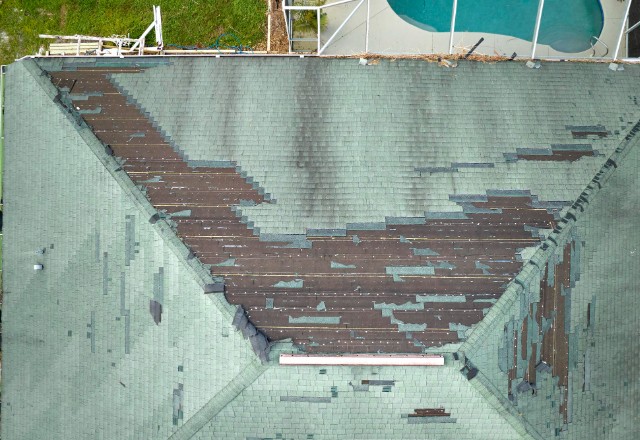
Conclusion
In conclusion, the lifespan of a shingle roof can vary depending on various factors. On
average, asphalt shingle roofs can last anywhere from 20 to 30 years. However, this
lifespan can be affected by several factors such as weather conditions, age, and
maintenance.
Extreme weather conditions like severe storms or constant exposure to harsh sunlight
and extreme temperatures can significantly reduce the lifespan of a shingle roof.
Additionally, the age of the roof and signs of wear and tear such as cracked, missing, or
loose shingles are indicators that replacement may be necessary.
To maximize the lifespan of a shingle roof, homeowners should prioritize regular
maintenance and timely repairs. Conducting annual roof inspections, addressing leaks,
and properly maintaining attic ventilation can help prolong the lifespan of the roof.
It is essential for homeowners to stay vigilant and address any signs of damage promptly
to avoid further deterioration and costly repairs. By taking proper care of their shingle
roofs, homeowners can ensure their roofs last as long as possible and protect their
homes from potential water damage and structural issues.



 509-201-4190
509-201-4190
